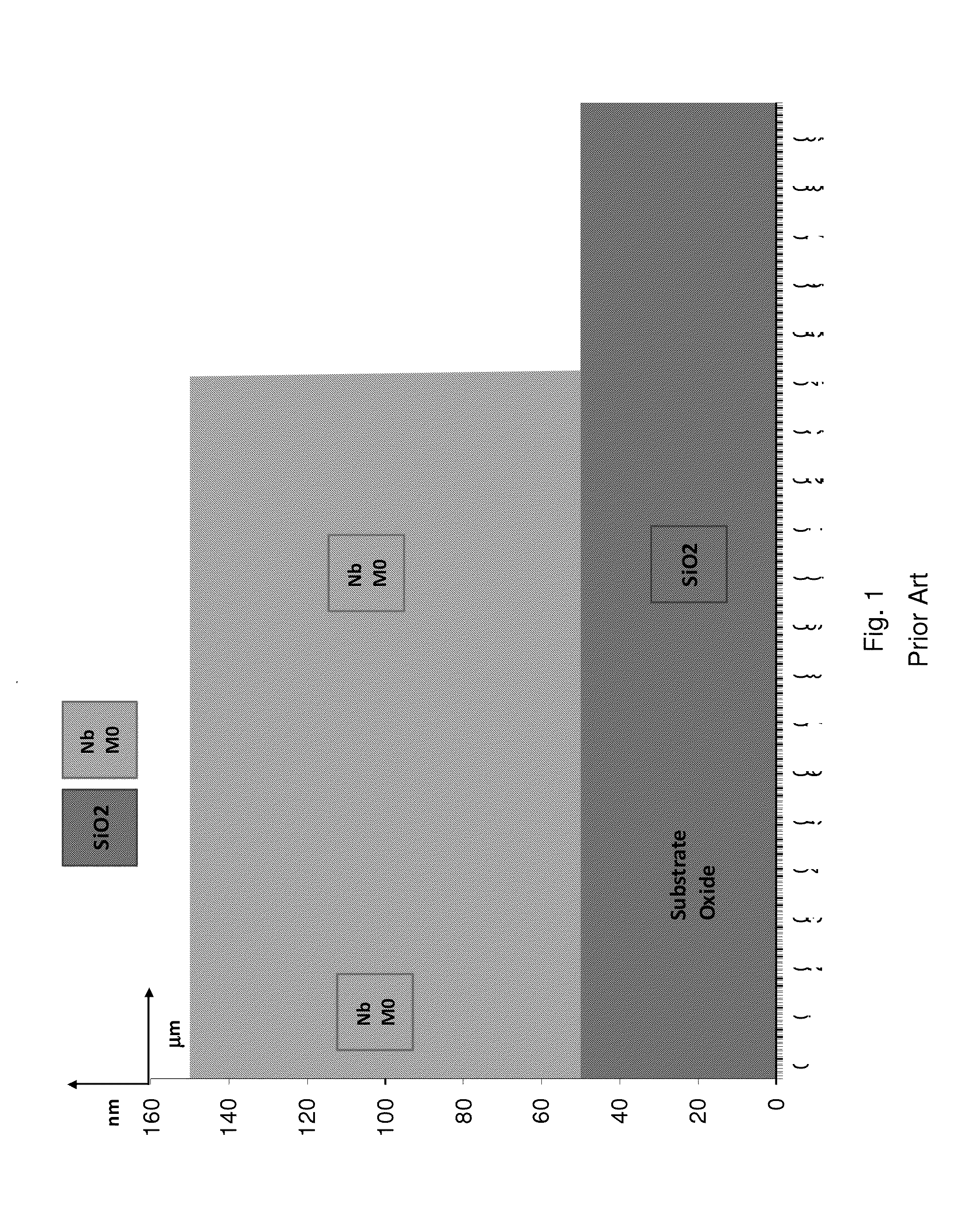Method for increasing the integration level of superconducting electronics circuits, and a resulting circuit
a technology of electronics circuits and integration levels, applied in the direction of superconductor devices, instruments, and semiconductor/solid-state device details, etc., can solve the problems of inability to provide a multi-layer planarization process, development of special fabrication techniques, and the inability to realize superconducting digital circuits for high-end computing. achieve the effect of fast planarization
- Summary
- Abstract
- Description
- Claims
- Application Information
AI Technical Summary
Benefits of technology
Problems solved by technology
Method used
Image
Examples
Embodiment Construction
1.0 Prior Art Fabrication Process
[0123]The details of a known Hypres Inc. (Elmsford N.Y.) the process flow will be described by following the cross-section of a biased, shunted Josephson junction as it made layer-by-layer. The layout of this is given in FIG. 12, which shows a layout of a shunted Junction connected to a bias pad with a bias resistor and grounded through the base electrode of the junction.
[0124]The process starts with a bare 150 mm diameter oxidized silicon wafer by deposition the first Nb metal layer (M0). Of course, other substrates may be used. Typically, the substrate is planarized before the first step, and indeed, may be a planarized circuit formed from preceding manufacturing steps.
[0125]The deposition is done in a cryo-pumped chamber to a pressure of about 10−7 Torr. Magnetron sputtering is used for deposition, where the wafer is scanned under the target at constant speed. Both the scan speed and the chamber pressure are adjusted to get the required film thick...
PUM
 Login to View More
Login to View More Abstract
Description
Claims
Application Information
 Login to View More
Login to View More - R&D
- Intellectual Property
- Life Sciences
- Materials
- Tech Scout
- Unparalleled Data Quality
- Higher Quality Content
- 60% Fewer Hallucinations
Browse by: Latest US Patents, China's latest patents, Technical Efficacy Thesaurus, Application Domain, Technology Topic, Popular Technical Reports.
© 2025 PatSnap. All rights reserved.Legal|Privacy policy|Modern Slavery Act Transparency Statement|Sitemap|About US| Contact US: help@patsnap.com



